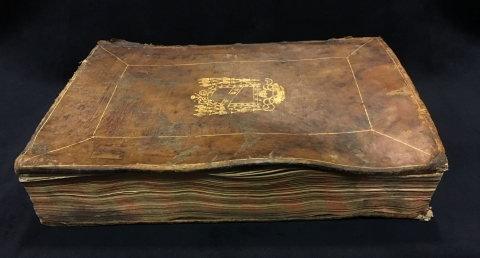Vlyssis Aldrovandi
Vlyssis Aldrovandi philosophi, et medici Bononiensis De piscibvs libri v. et de cetis lib. vnvs
Italian polymath Ulisse Aldrovandi (1522-1605) has been called the father of natural history by such giants in the field as Carl Linnaeus and the Comte de Buffon. A true Renaissance man, he studied law, philosophy, and medicine before being named the University of Bologna’s first Chair of Natural Science in 1561. He founded the University’s botanical garden— one of the first of its kind in Europe— several years later, and included space for his natural history collection, which included animal specimens, minerals, plants, and man-made artifacts. Aldrovandi’s collection was considered to be one of the best and most comprehensive of its day, and formed the core of his eleven-volume natural history series. Unfortunately, he only lived to see the first three volumes published, with this fifth volume, De Piscibus, appearing nearly ten years after his death. Somewhat ironically, although the Smithsonian Libraries holds all but one of his works, this volume, focusing on fishes, is the only one with extensive water damage. The fish may not have minded the moisture, but it’s not ideal for readers!
This book has an early 17th century full leather panel style binding with an armorial crest on the front cover. The spine has a hand tooled title and decorative stars. The fore edges are sprinkled with red diagonal stripes. The binding has sustained heavy water damage that has distorted the leather cover. The bottom panel of the spine is missing and there are holes from vermin damage and a blackening of the leather spine from the water damage. The texblock is distorted from the water damage causing the pages to have a "wave" to them. The endpapers are blackened by mold and the textblock has tidemarks from the water damage. The volume will be dis-bound and washed in de-ionized to remove the tidemarks. It will then be re-sewn on cords, in keeping with the original sewing. The covers will be retained but a new cover will be created for the textblock. The re-bound volume and the original covers will be housed in a custom double tray box.
Discover more about this book in our Catalog.
Adoption Type: Preserve for the Future

